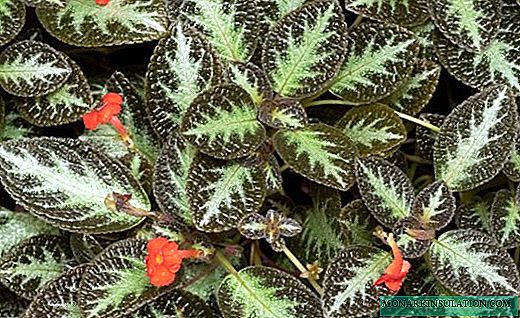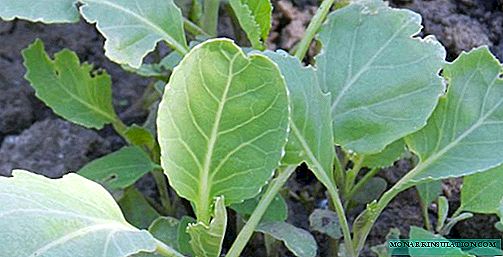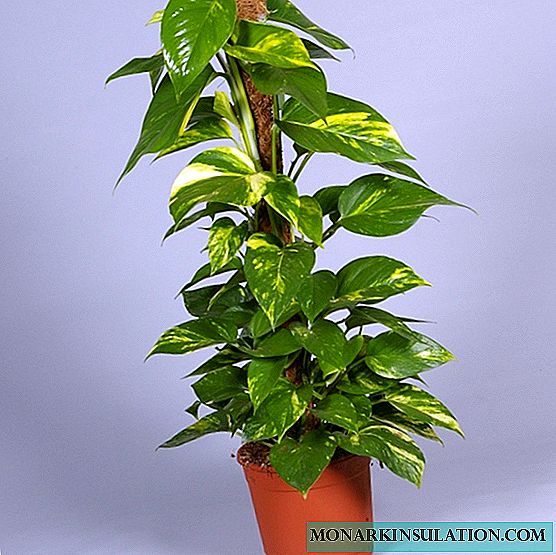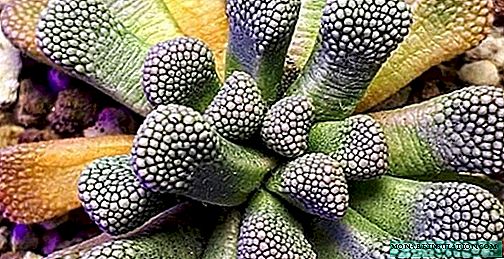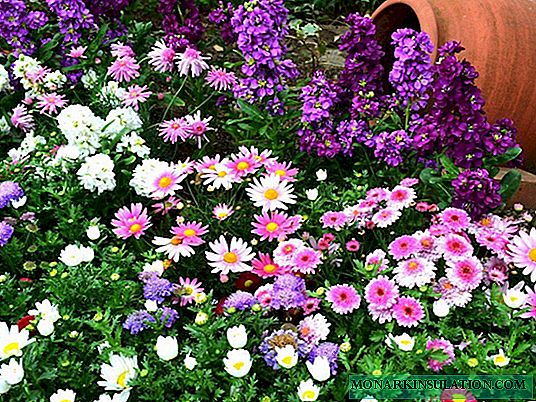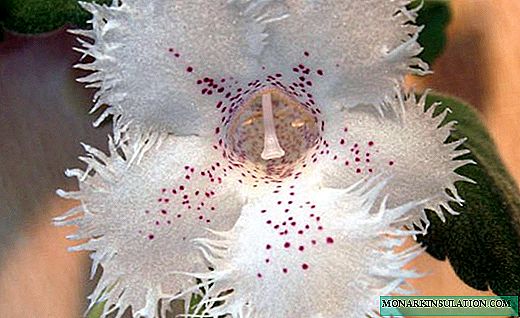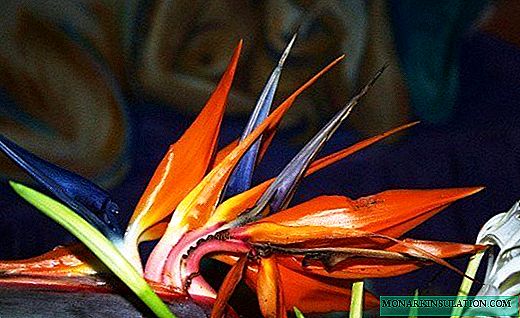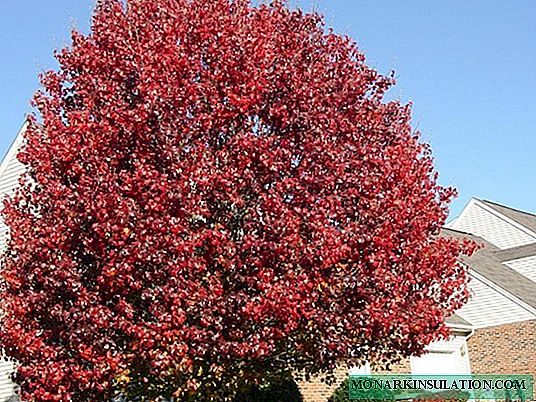
Fans of landscape design are happy to decorate their sites with various unusual plants. Unusual can even be pears, among which there are special decorative varieties. True, according to diverse and conflicting information in various sources, it is sometimes difficult to determine whether certain varieties actually exist. Let's try to figure out what kind of plant is a decorative curly annual pear.
Decorative curly annual pear - what kind of "fruit" is it
Decorative pears are actively used in landscape design in almost all countries of the world. There are several known varieties: Pear Bradford, Beach Hill, Loosestrife. Many Internet sources often add to this list a kind of "decorative annual curly pear." This name immediately intrigues: how can a tree be annual and even winding. All attempts to find more detailed information or a photograph of a mysterious plant are fruitless. All articles on Russian-language sites mentioning a curly pear represent ... a pumpkin as a photograph! True, these pumpkins outwardly resemble a pear. The curling annual pear is usually mentioned in the text, but the description of the varieties is given for ordinary decorative pears.

Cute pear-shaped fruits belong to a pumpkin and may well be used for decorative purposes
A study of foreign sites leads to the conclusion that they do not know about curly pears. There is the term "ornamental pear" - "decorative pear", but you will not be able to find the term climbing pear (curly pear). It can be assumed that someone mistakenly translated the expression pear curling leaf (twisted pear leaves) - a sign of the disease found in decorative pears, and since then the myth of a curly pear that no one has ever seen has arisen.
So, we are talking about completely different plants: decorative pears (full-sized large trees) and decorative pumpkin, giving pear-shaped fruits.
Decorative pears - description
A decorative or flowering pear (Pyrus calleryana), sometimes called a walnut pear, is a decorative tree from the Rosaceae family. These trees perfectly tolerate urban conditions, so they are sometimes called "urban pears." They are grown mainly due to the beauty of flowering as components of landscape design. During flowering, the trees are covered with large white flowers, from which a strong and pleasant aroma comes.

In the spring, a decorative pear looks like a flower bouquet
I must say that decorative pears look spectacular not only in the spring. They have beautiful dense foliage (therefore, such pears can be used to create shady alleys and arbors), which by the autumn acquires a bright red or golden red hue.
Decorative pears in the autumn in the photo
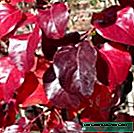
- Sometimes they get a bright red color.
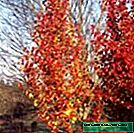
- Red and gold pears will decorate any garden or park

- Red-gold leaves glow against the sky
The fruits of decorative pears are small, about 1-2 cm in diameter, usually inedible. Initially, the fruits are colored green, which is then replaced by brown, and sometimes almost black. After leaf fall, the fruits often remain on the branches as a kind of decoration.

Fruits can remain on branches for a long time even after leaves fall
Varieties of decorative pears
Now several varieties of decorative pears are known. Consider the most common of them.
Pear Calera Shantikler
Pear Calera Chanticleer (Pyrus calleryana Chanticleer) is one of the most famous varieties of decorative pear. It comes from China, where it is found in the wild in forests and along river banks. The tree is characterized by intensive growth (growth of 30-40 cm per year) and reaches a height of 8-12 m. The regular, conical shape of the crown turns with a broad pyramidal shape with a width of up to 5 m with age. Lateral branches grow vertically.

Trees have a conical shape, which over time becomes wider and wider
The trunk and branches are covered with a smooth and even brown bark without spikes. Large (up to 12 cm long and 8 cm wide) oval-rounded leaves of dark green color have a shiny surface and bloom very early. Autumn color appears only in November and changes from yellow and orange to dark red and purple. When grown in cold climates and on moist soil, leaves fall off green (sometimes leaves remain until January).

Sometimes leaves take on an original bronze hue.
A tree blooms in April - May, very plentifully. Flowers can appear before the leaves bloom or at the same time. Most of the flowers are picked in clusters, and single flowers reach a diameter of 2 cm.

Often, flowers appear simultaneously with leaves
The fruiting of the Shantikler pear is plentiful, although the fruits are very small - about 1 cm in diameter. The shape of the pears is oblong-round, the color of the skin is greenish-brown. These fruits are edible, although not particularly tasty.
The roots of the tree are very strong and deep. In general, the pear is undemanding, can grow on almost any soil (subject to drainage), although it prefers nutritious soils with a neutral or alkaline reaction. Good ripening of fruits and bright coloring of autumn foliage require good lighting. Under adverse conditions, young plants (trunk diameter up to 25-30 cm) can be damaged by frost. It becomes frost resistant with age. It blooms early, so it can suffer from spring frosts. With early snowfall, branches may break.
The tree is notable for its very low sensitivity to air pollution. Thanks to this property, Shantikler is well suited for urban landscaping.
Pear Calera Shantikler on video
Pear Callery Bradford
Pear Callery Bradford (Pyrus calleryana Bradford) - an American variety of pears Calleri obtained in the Scanlon nursery in 1959. In youth, the tree grows at a moderate rate, which increases with age. A tree can reach a height of 12 m and a diameter of 9 m. The crown is dense, symmetrical in a pyramidal shape, and in breadth grows in age. Branches are compact and grow vertically.

Bradford pear crown is dense and compact
The smooth bark of a dark gray-brown hue becomes fissured over the years. There are no spikes on the shoots. Wide oval leaves growing on long stalks have a dark green color and a glossy surface. In autumn, the foliage becomes orange-red, yellowish-red or purple.

Elegant, glossy, rather large leaves
Abundant flowering occurs in late March - early April. The thyroid inflorescences are composed of not too large flowers of a creamy white color.

Bradford pear flowers are very large and beautiful.
Shortly after flowering, small (up to 1.5 cm in diameter) fruits of undecorative property are formed. They are inedible, have a light brown color and remain solid until frozen.

Although the fruits are inedible, they cope with the decorative function.
Compared to other decorative varieties, the Bradford pear is short-lived - it lives up to 25 years.
Pear Loosestrife
This kind of pear is found in nature and is grown artificially in Asia and the Caucasus. The plant is very unpretentious to care, can grow even on salty, moist and dense soils. The only "vagaries" of the tree are photophilousness and dislike for cold gusty winds.
Growth rate is low. The maximum height of the tree is 10-12 cm. The crown has the shape of a spreading tent, the branches are somewhat drooping. The pear owes its name to narrow long pubescent leaves, similar to willow. At a young age, the leaves have a silver hue, then darken to a dense green color.
Pear Ivolistnaya in the photo
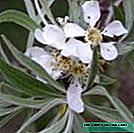
- In combination with long leaves, large white flowers look exotic
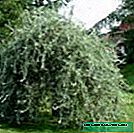
- In appearance, the pear tree resembles a weeping willow
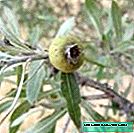
- Loosestrife fruits do not represent nutritional value
A pear blossoms in May with large white flowers collected in corymbose inflorescences. Fruits (ripen in August - September) are rounded or wide pear-shaped in yellow or green-brown color. Loosestrife is characterized by high winter hardiness and drought resistance, and also very well tolerates dust and gas contamination. The pear performs the decorative function for 30-40 years. Pest and disease Evolistnaya practically not affected. Propagated by seeds.
Gusha the Loosestrife on video
Pear decorative Beach Hill
A decorative pear Beach Hill belongs to the species Pyrus communis (Pear ordinary). In nature, this plant is distributed in Europe and Asia Minor.
It is a medium-sized tree (10-12 m, maximum - 15 m) with a narrow-pyramidal crown. The width of the crown reaches 5-7 m. It is characterized by a powerful branching structure. The growth rate is medium to high (an increase of 20-40 cm per year). The trunk is strong, covered with gray-brown bark.

The pear has a regular crown of a pyramidal shape
The tree is covered with dense foliage, consisting of large (up to 8 cm in length) elliptic leaves of bright green color. In autumn, foliage is painted in bright yellow or orange.

Autumn leaves turn yellow-orange
Beach Hill blooms in April - May with large white flowers collected in a brush. Pear gives edible (true, sour and tart) fruits up to 2.5 cm in size.

Small fruits are neither beautiful nor taste
The root system of the tree is columnar, very powerful, due to which the tree is resistant to drought and flooding. Easily tolerates urban conditions. Despite the photophilia grows well in partial shade. It is not particularly demanding on soils, but prefers dry, nutritious, slightly alkaline soils. Strong wood structure ensures wind resistance. Frost resistance corresponds to zone 5 (suitable for cultivation in the southern regions of Russia and Ukraine). May suffer from late spring frosts. The tree is very durable - it lives up to 150 years, but grows old early on sandy soil.
Planting and caring for decorative pears
Decorative pears can be propagated by cuttings, grafting and seeds. The first two methods are more often used for the Ivolistnaya pear (it is also propagated by the root shoot), and planting by seeds is used for all pear varieties.
Planting a decorative pear
Seeds are soaked for 3 days in warm water, which must be changed every day. On the last day, it is advisable to add growth stimulants (Ribav, Zircon, Epin). Then the seed must be stratified - exposed to cold (pear seeds sprout poorly without this operation). To do this, it is recommended to mix coconut substrate, horse peat and river sand in equal proportions, as well as add 10% perlite. In a moistened mixture, seeds are placed (to a depth of 1-2 cm), covered with a perforated film and put in cold for 60-90 days (+ 3 ... +5 aboutC) place. At home, the lower shelf of the refrigerator is suitable for this operation. It is necessary to regularly check whether the substrate is sufficiently moist and whether the seeds are rotten. By the end of the stratification period, the seeds should germinate.
Sprouted seeds are removed from the refrigerator and planted in nutrient soil. After the appearance of 4 pairs of true leaves, a pick is carried out (transplantation into another dish or open ground with the simultaneous cutting of roots).
The author’s own experience in growing pears from seeds was successful enough to share. Pear seeds, washed after extraction from the fetus and after 3-day soaking, are placed in a bag with wet sawdust or moss (the bag cannot be tightly tied) and placed in the refrigerator (vegetable compartment). After 3 months, the germinated seeds are carefully removed from the substrate and planted in the ground. The author planted each seed in a separate container (liter tetra pak from milk). Capacities are placed under the light of a phytolamp, and with sufficient daylight, on a window. Usually, by the second decade of February, seedlings of second leaves already begin to develop.
When pear seedlings grow, they are moved to open ground.
One and two year old seedlings are best tolerated.
For planting decorative pears, well-lit or semi-shaded areas are desirable. The soil is preferably loamy or sandy loam, with a neutral pH. Most varieties, except the Loosestrife, feel good on slightly alkaline soils. On heavy soils, planting is possible while providing good drainage.
The technique of planting a decorative pear is practically no different from planting other fruit trees.
Planting is preferably carried out in the spring, so that the plant has time to take root before winter. If you plant in the fall, you need to calculate the planting period so that 3-4 weeks remain before frost.
The dimensions of the landing pit are 0.7 by 1.0 meters. The pit is seasoned with a mixture of fertile soil with compost and sand (2: 1: 1 ratio) and the addition of mineral fertilizers. A sapling with straightened roots is lowered into a hole, covered with soil and rammed. Then watering is carried out and the trunk circle is mulched with peat.
Planting a pear on video
Pear Care
There are no distinctive features in the care of decorative pears. Standard watering is required (4-5 times per season), loosening the soil, fertilizing and pruning.
Irrigation can be carried out along furrows, but sprinkling can also be used (especially for the Loose pear). The watering rate for a tree of 10-20 years of age is 30-40 liters.

Decorative pears, like fruit, like sprinkling
Fertilizers must be applied every 2-3 years, and on very poor soils - annually. 5-8 kg of compost, 15-20 g of urea, 20-25 g of potassium sulfate and 15-20 g of superphosphate are required for each square meter of the trunk circle.
Decorative pears are formed in a natural way. If you do not want to give them any special shape, you still need to cut them to increase wind resistance. Sanitary pruning to remove dry and diseased branches is carried out in autumn and spring, as well as for other varieties of pears.
The winter hardiness of decorative pears, especially young ones, is not too high, therefore, for the winter, the stems and the bases of skeletal branches need to be insulated with paper, fabric, lapnik, and the trunk circle should be covered with a thick layer of mulch (humus, peat).
The possibilities of forming a decorative pear
Since decorative pears are not grown for the sake of fruit, when forming them, you can realize any of your fantasies. To obtain interesting shapes, trellises of wooden or metal gratings or wire stretched in several rows or a strong rope are necessary. Metal trellises need to be braided with plastic so that in frost the metal does not damage the branches.
Various forms of growing decorative pears - photo
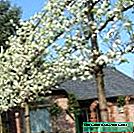
- Trees located in the same plane look very unusual

- Tapestries make it possible to form a pear in two tiers
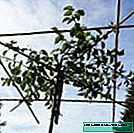
- The flat support structure created from the rails allows you to get an interesting shape of the crown of a pear
Decorative pears can be formed even in the form of an arch, if you direct and fix their branches on curved trellises.

If the central conductor of the pear is directed along an arc-shaped support, you can get an arch of trees
Diseases and pests of a decorative pear
Being almost wild-growing trees, decorative pears very rarely suffer from diseases and pests. Nevertheless, it is advisable to periodically treat plants with fungicides and insecticides for prevention.
The greatest likelihood of damage to decorative pears (in particular, Bradford varieties) with a bacterial burn and leaf spot. A bacterial burn is manifested in the blackening of the ends of twigs and leaves, but can also spread to flowers and fruits.It is easiest to detect the first signs of the disease in spring - during flowering, the affected flowers dry out and turn brown, as if from a burn. The disease is caused by the bacterium Erwinia amylovora from the family of enterobacteria.

With a bacterial burn, young leaves turn brown, as if from a flame
The disease can be treated by treatment with copper-containing preparations and the removal of affected parts of the plant.
The bacterial burn of the pear Erwinia amylovora is the same microbe from the Enterobacteriaceae family as Escherichia and Shigella, Salmonella and Yersinia, causing digestive upsets in humans. Therefore, the drugs used in the treatment of diarrhea in humans also act well on it.
Raspopov Gennady Fedorovich
//sadisibiri.ru/raspopov-bakter-ogog.html
Brown spotting of pear leaves is caused by Entomosporium fungus and usually manifests itself in autumn and spring. One of the earliest symptoms is the appearance of red spots on the surface and base of young leaves. As the leaves ripen, the spots turn gray and then black and spread throughout the leaf blade. The disease can be treated with fungicides (Fitosporin-M, Fundazol, Topaz).

When affected by brown spots, the sheet becomes covered with dark spots and dries
Curl of pear leaves is caused by bubbly tafrina. This disease rarely affects a decorative pear, but can cause great harm, as it causes rapid decay of foliage. Young leaves thicken, become uneven (curly), turn red-yellow. The fight against the disease consists in trimming and burning sick shoots, as well as spraying before dissolving the kidneys with a solution of iron (3%) or copper (1%) vitriol.

Under the influence of the fungus, pear leaves twist, their surface becomes uneven
Gardeners reviews
I know from my own experience that our North Caucasian looser pear perishes on acidic soil and requires neutralization with lime. Loosestrife was well compatible with European varieties. Local then for late fruit and taste all cut down. The loosestrife was a stock for Bon Louise, Williams, Clapp's Favorite, Forest Beauty, Starkrimzon like, Kiefer. And like an insert. It was believed that Europeans could easily tolerate drought in the steppe regions. Winter resistance was again increasing.
Karen
//forum.prihoz.ru/viewtopic.php?t=6918&start=90#p543369
Looser pear is really rare on sale. It does not grow very actively and freezes (or becomes infected with necrosis). The photos are dark, not very visible, but most likely you will have to cut off the broken branch - on the right in the first photo. In the future, formation is not needed - only shorten too long branches, aligning the crown, if it does not grow symmetrically
Rombor
//treedoctor.ru/forum/Treedoctor/read.php?id_forum=1&id_theme=1328
I saw a loosy pear in the park, there are several grafted trees growing there. There were no visible signs of freezing, or I did not notice. In one of the trees on the trunk in the fall I saw a rootstock shoot with the leaves of an ordinary pear, but in December, when they came to cut cuttings with Anatoly, I could not find this shoot.
Klimych
//forum.prihoz.ru/viewtopic.php?t=6918&start=90#p543369
If you want to decorate an arch or arbor with a climbing plant with pear-shaped fruits, you can plant a decorative pumpkin. If you prefer trees - plant a decorative pear that blooms beautifully and looks elegant both in spring and autumn. Existing varieties of these interesting trees will satisfy the most demanding landscape designer.










